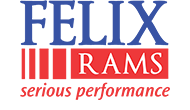We’re serious about lambing ease. Very few of our clients have trouble at lambing. For many of our clients, the birthweight asbv is the first one they look at. Dead lambs don’t grow, and never make sale weight.
We first started weighing lambs at birth in 1996. Since then we have weighed 14,759 poll dorset lambs and 8,427 white suffolk lambs. Just over 23,000 lambs! That is a lot of birthweights. Big lambs, little lambs, every lamb is weighed, and all the data is submitted to Sheep Genetics. We have also been recording lambiong ease as a trait for Sheep Genetics since 2004. The problem is if you have very few lambing problems, there is very little useful data. We can also supply lambing ease asbvs.
Its also become very obvious to us that birthweight is very important to growth rate and survival. Lambs that are that are too small are mostly don’t grow as well and are more prone to the weather and mismothering. Big heavy lambs mean lambing difficulties , dead lambs, dead ewes.
We aim for birthweights asbvs between 0.0 and 0.5. What suits your ewes, property and feed will vary farm to farm.
Most merino producers seem to want lower birthweights (asbvs 0.0 to 0.35) than producers with crossbred ewes (0.25 to 0.5).
Best to use the lower bwt rams on maidens and oldest ewes (we can provoide current asbvs for your team of rams)
If you scan for twins and singles you can probably use higher birthweight rams because you can manage ewe condition according to pregnancy status.
Using a team of rams with similar bwt asbvs will help determine what asbv you need to be buying

